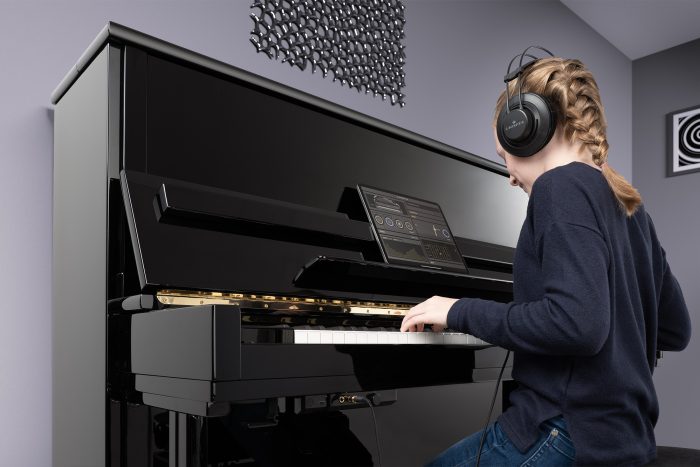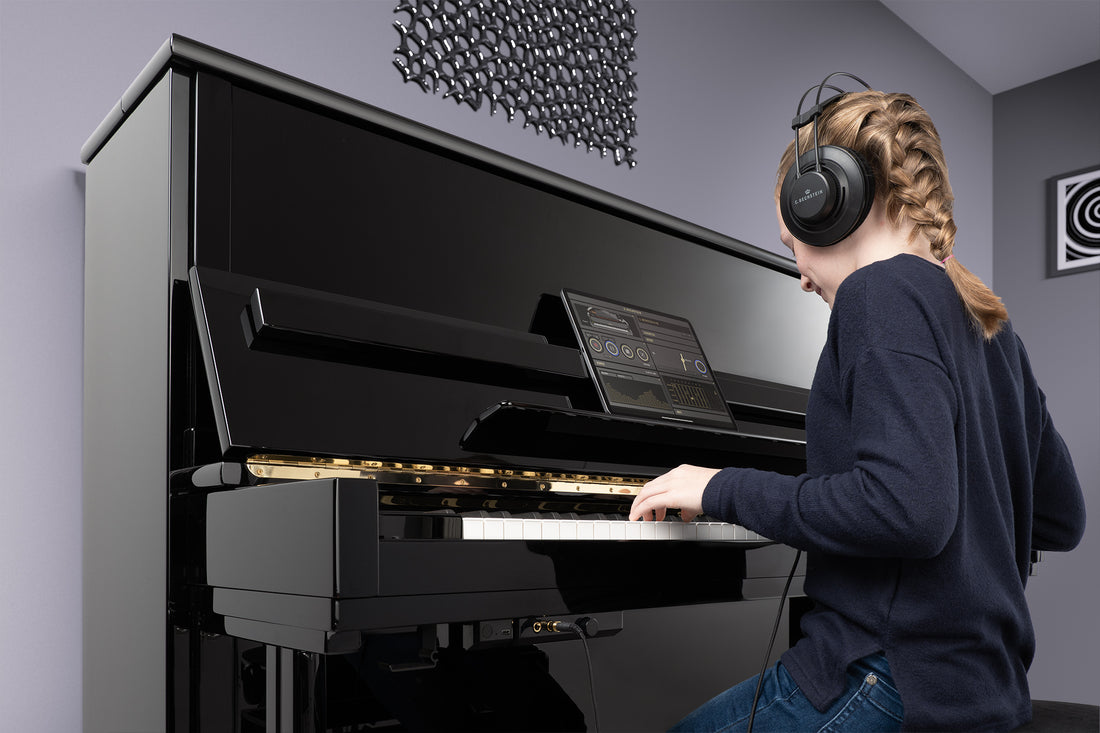Silent pianos are becoming increasingly popular and for good reason! A lot of people often say that they would love to have the feel of a real acoustic piano but often turn to digital pianos for one main reason…
...The ability to play through headphones.
Today we’re talking all things silent systems, why you might be interested in one and how they can help improve your playing experience. We’ll also be offering you some insider knowledge on retro-fitting silent systems and some of the more budget friendly options out there.

Why silent pianos?
People may want a silent piano for a whole host of reasons - It’s no secret that there’s nothing quite like a real acoustic piano. Whilst digital technology has progressed incredibly far and there are some sublime digital instruments out there, you are always slightly compromising as you swap a real acoustic hammer striking a real string like you get in an upright or grand for a plastic or hybrid action.
Silent pianos help offer pianists a way of maintaining real acoustic feel with peace of mind knowing that they can still enjoy silent play in the comfort of their own home, giving both those around you peace no matter time of day and yourself full immersion in your instrument when others are around. This is especially beneficial for those perhaps living in flats, or terraced housing with neighbours but still want to be able to practice any time of the day.
Some of the images used below come from our acoustic technician Chris fitting a Kioshi system into a customer’s old acoustic piano.

What are silent systems?
Silent systems are usually an added feature that can be optionally fitted to pianos should the user want the feature, for example you can buy a Yamaha B2 (£4,199), or you can buy a Yamaha B2 SC2 (£6,860), both are the same piano, but the SC2 comes fitted with Yamaha’s own silent system and allows for headphone play and recording capability.
Silent systems are usually a small box, or lever underneath or on the side of the piano that comes fitted with a basic interface, headphone jack and digital capability such as USB inputs.
Something that is also a bit of hidden secret within the piano industry is that almost any existing piano in good condition can still be retro fitted with silent systems, meaning that you don’t necessarily have to even replace your much beloved current instrument if you don’t want to. These systems come in various price points and ranges, but usually start from around £999 to be fitted.

How Do Silent Systems Work?
Unlike hybrid pianos that ‘simulate’ acoustic pianos, silent pianos simply prevent the hammers from striking the strings via a roll bar and use various touch sensors to feel how hard or softly the key is being played. This data is then sent to the system and it is translated into a digital sound that the user chooses.
This has a number of benefits because not only does it allow for headphone play, but also allows the user to change the ‘tone’ of their piano. On the C.Bechstein Vario system for example, one of the sample options that comes with the system is the C.Bechstein D282, C.Bechstein’s most premium piano (valued at over £130,000), transforming any instrument it is fitted into a concert grand! To learn more about the C.Bechstein vario system, read our guide here.
What Kind Of Silent Systems Are There?
As we mentioned, the world of systems is ever growing and something that more and more manufacturers are producing within their acoustic ranges. To name just a few of the silent systems out there:
- Yamaha SH
- Yamaha SG
- Yamaha Transacoustic
- Yamaha Disklavier
- Kawai ATX
- Kawai Aures
- Bechstein Vario
- PianoDisc Prodigy/Prorecord
- PianoDisc QuietTime/Entertainment/Interactive
- Steinway Spirio
- Adsilent
- Kioshi
Each of these systems works in a slightly different way and each come at different price points depending on the needs of the pianist, however many use the same few tools to function.
Each silent system is fitted in a slightly different way however ultimately it involves removing the piano keys and fitting a sensor rail to the keybed. For many systems, simply touching a button, or pulling a level will lower what is known as a stop rail. A mechanism that stops the acoustic sound of the piano by catching the hammers just before they hit the strings. They then use the piano’s natural let off, a feature of an acoustic piano action that stops the hammer jamming against the string which the key is pressed in order to determine both the speed velocity and sensitivity that the piano is being played at.

The Potential of Silent Systems
Silent systems are very much a new territory in the piano world and the sky really is the limit of how far they can stretch. Unlike digital pianos, a large draw point to the acoustic piano world is that acoustic pianos largely hold their value far better than that of digital pianos.
You may ask then: What about when a new silent system is released? Will that devalue the old system?
The answer to this is a little more complicated as silent systems work in a few different ways, some do come fitted with the piano and so when a new technology does come along they do become outdated, however what is becoming more prevalent is the use of app based silent systems that allow users to control their system to their device, that way whenever a new version of the system is released, instead of having to change the system on the piano, the app can simply be updated!
In terms of other capabilities of silent systems, even the most basic systems convert the movement of the piano keys to MIDI, so they can be received by a computer. The most advanced systems let you enjoy a world-class performance being played on the other side of the world, transmitted to your piano, with each key moving and sounding as it is played by your favourite pianist.

We hope this guide to silent systems has helped you understand the limitless potential of silent play! If you are considering a silent piano, or second hand piano fitted with a silent system, our team would love to hear from you and help answer your questions!

